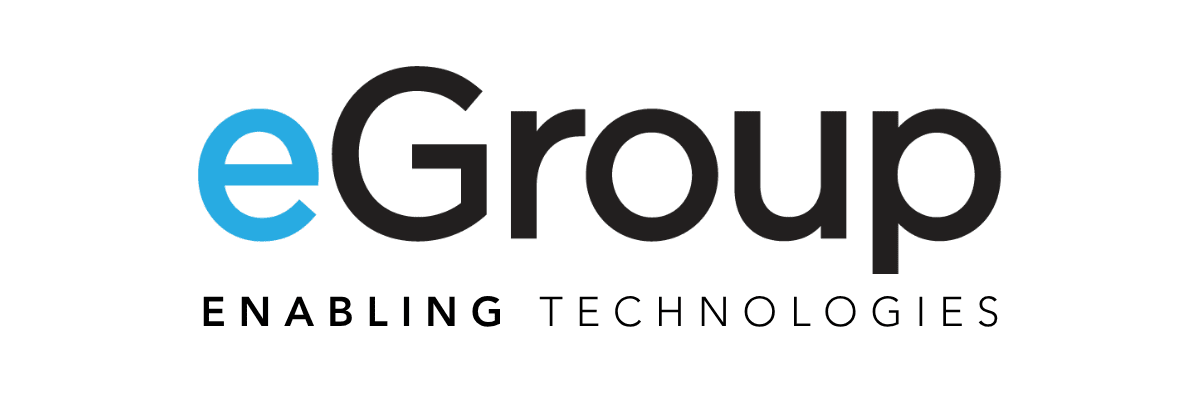Modern collaboration tools are everywhere—but is your organization actually collaborating better? This maturity model provides a framework to help IT and business leaders evaluate how effectively their people, processes, and technologies are aligned to drive true productivity and cultural change.
The Impetus for a Model
There’s no shortage of productivity tools, but there is little means of judging their efficacy. Despite spending time and money on tools and technology, IT leaders still aren’t sure how well their organization is collaborating. While most modern tools generate utilization statistics, are people any more productive by using them? Have we simply shifted to recent technology, or have we shifted the productivity curve?
Enabling has spent 15+ years helping organizations gain value from Microsoft cloud and collaboration tools. Throughout this time, we’ve seen major successes and flustering challenges. The outcome never solely depends on the technology or tools themselves. Rather, success is predicated on several factors that in combination define the readiness, the maturity, of the organization.
To depict the factors in a visual way, we posit the following “Collaboration Maturity Model.” It’s comprised of five stages of maturity, from Ad-Hoc to Optimized. Each stage is described by five factors: culture, scope, tech & tools, governance, and outcomes.
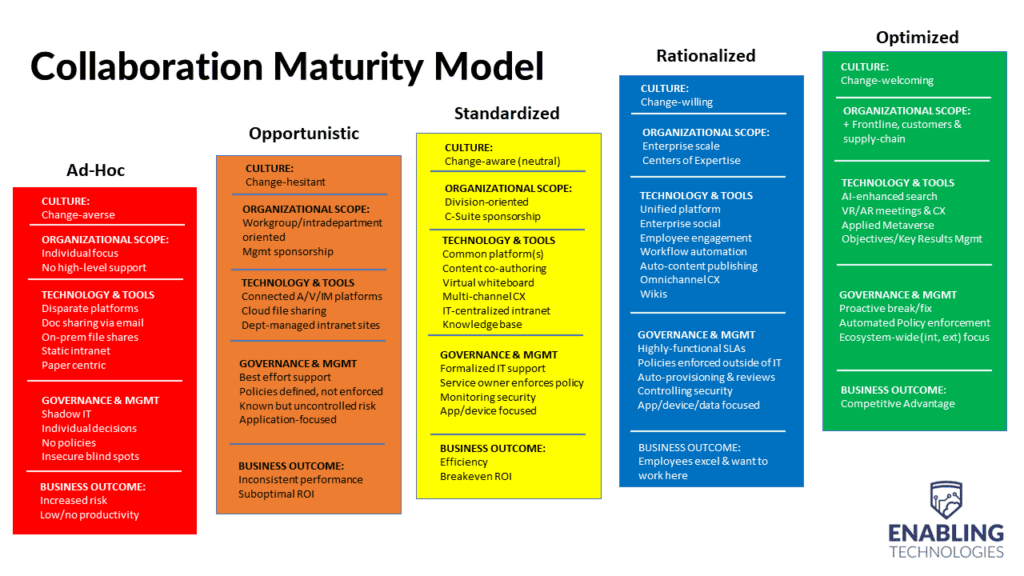
This blog outlines the stages and the key factors within. Using this model as a reference point, leadership can better understand where they stand, and devise plans to take steps toward the optimal state.
Success Factors
Culture
Can a more collaborative culture be taught? While Drucker’s quote about culture eating strategy holds true, there are some organizations that do use collaboration as the impetus for culture change. “Skype really transformed our culture here,” said Don Bender, CIO of GAI Consultants, an Architecture/Engineering/Design firm. “The best testament to the success is hearing Skype become a buzzword in our culture now. I hear people walking the halls saying, ‘Hey, I’ll Skype you.’ You hear it all the time here at GAI.”
Some organizations have a cultural head start. Professional services firms like GAI have shared interests and centers of excellence in diverse geographic locations. Such business models provide more cultural advantages for collaboration than, say, a K-12 school system. Bright Horizons, which serves 100,000 families across USA, Canada, UK, India, Netherlands, also saw collaboration as a culture changer. “It was critical to get Teams right because we thought with the right adoption, we could actually change the way people work,” said Ellen Cameron, Director.
These kinds of firms invested in adoption and organizational change management because they knew the outcome could be significant. That’s the key. While no individual nor any set of technologies can change a culture on its own, incremental improvements along the maturity model do happen with an intentional focus on change management.
Organizational Scope
The breadth of collaboration usage across an organization helps to define its maturity. Understandably, pilots and small work groups initiate changes. With proper leadership, backing, and commitment to training, the organizational scope grows. It is in the initial stages where strong leadership can help the organization standardize on specific processes and tools. When that happens, maturity advances. Many organizations are encumbered with three or four collaboration tools. Once they start to simplify and scale across the entire organization, the consistency, efficiency, and risk profile all improve.
Tools/Technology
The technologies and tools mentioned in the model serve as reference points, not strict checkboxes. The key reference is that organizations on the right are using more advanced tools in an operational way. Organizations on the left use fewer, older (some might say the wrong) tools in a randomized way.
A well-known example is where a group of collaborators emails drafts and attachments around to each other, suffering version control issues and single threaded authorship. More mature organizations are co-authoring with OneDrive or, and even more mature organizations use Teams. A less obvious example would be text messaging work-related information, which could put the organization out of compliance and at a minimum, at greater risk.
Governance and Management
Sure, this isn’t the most glamorous category, but IT Service Management is a viable measuring stick of maturity. Organizations who are just getting started (rightfully) don’t over-invest in policy and procedure. As critical mass grows, so should the SLAs and SOPs. In some non-critical technologies, this is a natural progression. At Bright Horizons, a Teams pilot turned into full production rapidly, leaving key decisions to be made in flight. “The number of outstanding governance questions was a challenge,” said Nazanin Namvar, Manager of Business Analysis. “We’d started our Teams pilot before having done so, which was a little bit backwards. We caught up by getting stakeholders involved from help desk, infrastructure, implementation, and communications teams.”
With more mission critical workloads, getting ahead of operational aspects is even more important. Enabling has vast experience with Teams (and Skype/Lync/OCS) voice, which is a mission critical service. If Teams voice rolls out with velocity, and management of phones, updates, direct routing, international and toll-free costs, and quality of service go unmanaged, service issues will draw negative attention. Getting SOPs and SLAs in place before critical mass is reached is more important for important workloads.
Business Outcome
That brings us to the final and most crucial factor, the business outcomes. As with any maturity model, the longer and more deeply immersed a workflow or technology becomes, the greater the chance of achieving the outcomes that were envisioned in the first place. The lack of mature collaboration tools and processes exposes risk and wastes time (which is money). Organizations moving to the right begin to internalize the new way of working, which gets the tools and processes out of the way and unlocks the upside of the investments. Organizations sustainably doing this will gain a competitive advantage. Mature organizations experience improved time to market and more operational efficiencies, realizing in top and bottom line growth.
The Stages
Ad-Hoc
This can be a fun, experimental, and short-term phase for an organization with a history of innovation.
But in organizations where change is hard, it is likely to be a longer, and potentially perpetual phase. A well-known example is where a group of collaborators emails drafts and attachments around to each other, suffering from version control issues and single threaded authorship. Even if there are some innovators out front, they find their success limited and difficult to scale.
There of course is no need for governance here since no new standards are emerging. Sometimes the organization lags so far behind, a radical transformation (often spurred by new leadership) eventually becomes necessary. Culturally, the organization sees change as an impediment to “the way things are around here.” Business outcomes are non-existent or worse, at risk, due to a lack of control and visibility. Clearly this is not the place to be.
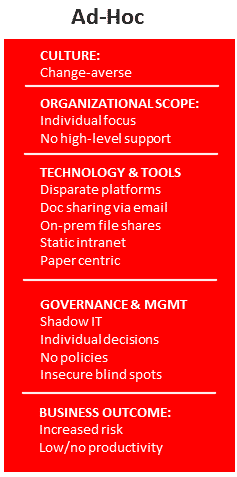
Opportunistic
Here, innovation expands beyond individual use into workgroups and departments. Those outside of the affected workgroups are change-skeptical, though, wondering what those renegades are up to.
Some modern tech is used here, but not at the scale or consistency of more mature stages.
The IT department may hear about and try to support the innovative technologies, but until they achieve critical mass, ITSM practices like SOPs and SLAs lag. Business outcomes are difficult to measure.
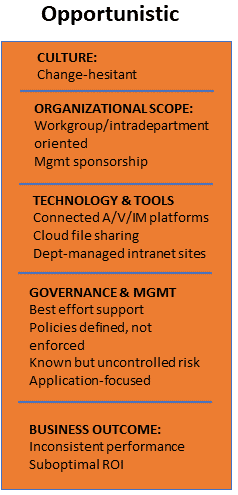
Standardized
It’s in this phase where strong leadership support moves the organization from using a variety of tech in a random fashion to a smaller set of standard, enterprise-wide tools. For example, the nationwide Architecture and Construction firm of Johnson, Mirmiran, and Thompson. “By 2018 and 2019,” began CIO Bill Smith, “the organization had accumulated too many collaboration and communications solutions. IT and business operations groups had become comfortable with solutions that have served them well, and consequently were not motivated to change to something else. Although our staff was frustrated and confused by having too many options, individuals advocated for their preferred solution and did not want to change.”
Organizations can proceed with the status quo, or take the reins at this point. Said Smith, “Doing nothing was going to exacerbate the problem relative to confusion amongst staff. For example, a person could receive chats via Jabber, Skype, and Teams.”
Once a successful organization selects the toolset, they then set policy and procedure to improve governance. They also invest in change management to ensure the culture adapts and can start to show ROI and business efficiencies.
Answering the call that you are making a test call!
- Make sure that the call used the expected dial plan, route, PSTN usage and voice policy assigned to the test user.
- Verify that the call used the correct route and manipulation (if needed) on the SBC.
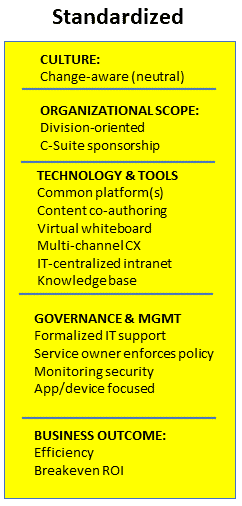
Rationalized
According to Webster, to rationalize is to apply research-based managerial principles for increased productivity and efficiency. Here it’s not just about selecting tools or ensuring adoption or ITSM excellence, it’s the combination of all the above. Technology wise, this stage is about a consistent, integrated experience, where a minimal number of multivendor systems are stitched together in a sensible, user-friendly way. Organizations in this stage have employees who have seen the benefits of prior stages and tools. They become willing to change and feel like the tools offered make it a better place to work than alternatives.
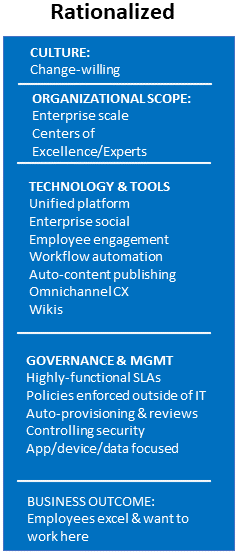
Optimized
When the final stage is reached, the organization possesses a culture that welcomes improvements to their operations. The optimized workflows reach not just everyone in the organization, but customers and business partners as well.
The technology is natural and automated, and artificial intelligence enhances the user experience. Results-based systems like Objectives and Key Results trackers are clearly delivering business value.
IT shifts its tight creation and management of policy to the business, and the organization achieves a coveted competitive advantage.
Organizations who achieve this stage rarely rest on their laurels, and redefine “optimized” to push the bar further to their new right-most stage.
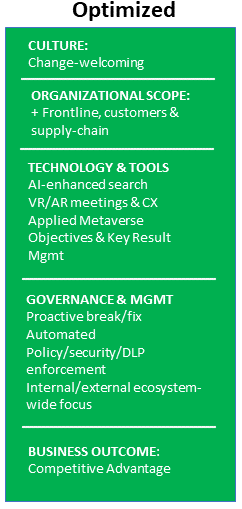
Summary
Where is your organization along the maturity continuum? As you ponder your position, keep in mind that few organizations will fit neatly into one of the colored stages. For instance, technology changes often force an organization to catch up on governance and ITSM. New tools occasionally precede culture change. Innovative organizations are moving right more quickly than traditional ones.
As you evaluate the chart, consider:
- What was the last tool, technique, or workflow that helped the organization move right? What should be repeated from that effort?
- Conversely, where did the organization get stuck? Have all aspects in the stage been addressed to enable the shift to the right?
- If tools alone aren’t moving the organization to the right, are they being supported with intentional adoption and ITSM principles?
- Does the organization lead with technology, or start by defining business outcomes and working back?
We hope you find this helpful. We welcome any feedback and future discussions about moving your organization to the next stage in your Collaboration Maturity Model.
Engage the eGroup | Enabling Technologies team who have “been there, done that” experience and know all of the “minefields” to prevent missteps. Contact us at info@eGroup-us.com to schedule some time with our experts.



